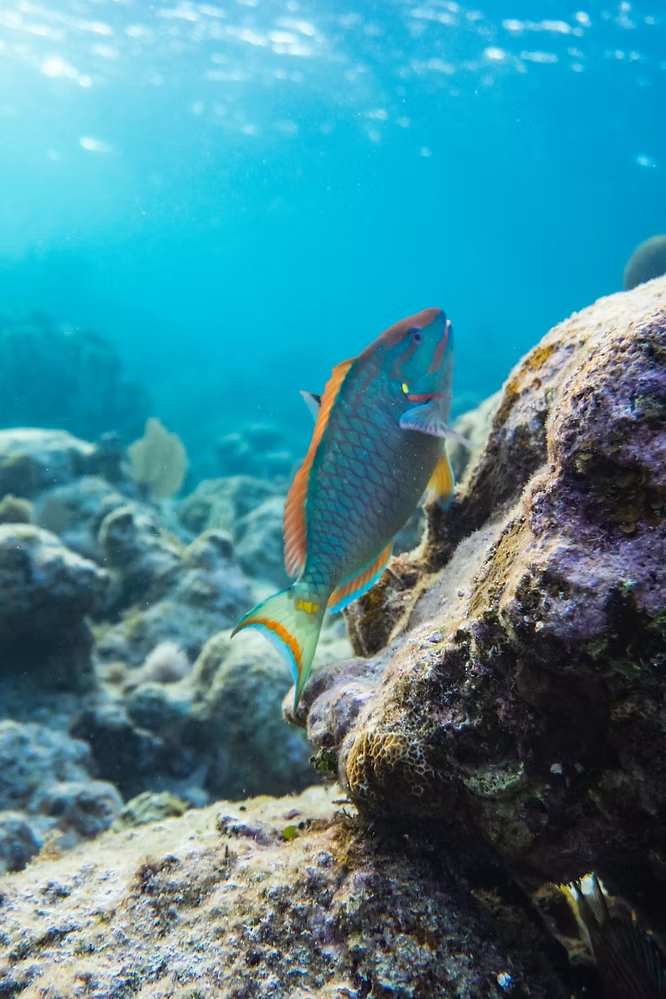Parrotfish: Nature’s Coral Crushers and Sand Makers
What goes in must come out, and with parrotfish, what comes out is sand. These brightly colored tropical fish, with their strong beak-like mouths, spend their days biting down on coral reefs. Hard coral may seem indestructible, but parrotfish teeth—among the strongest in the world—make quick work of it.
How Parrotfish Eat Coral
Parrotfish feed by grinding coral skeletons, consuming not only the hard calcium carbonate but also the polyps, algae called zooxanthellae, and bacteria that live inside. After digesting the soft tissues, they excrete the leftover skeleton as sand. A single large parrotfish can produce up to 1,000 pounds (450 kg) of sand every year—roughly the weight of a baby grand piano. This natural process helps create the white sand beaches many of us enjoy.
The Remarkable Teeth of Parrotfish
Each parrotfish has about 1,000 teeth, arranged in 15 rows and fused into a durable beak. As teeth wear down, they fall away, with new rows ready to replace them. Biophysicist Dr. Pupa Gilbert, intrigued by their loud crunching sounds underwater, studied their composition with a research team. They discovered that parrotfish teeth are made of fluorapatite, a crystal biomineral tougher than copper, silver, or gold. On the Mohs hardness scale, fluorapatite scores a five, and the tooth tips are the stiffest known biomineral in the world. These teeth can withstand pressures of up to 530 tons per square inch—the weight of 88 elephants.
A Crystal Structure Like Chainmail
Using advanced technology called PIC mapping at the Lawrence Berkeley Laboratory, researchers uncovered an intricate crystal structure in parrotfish teeth. The crystals were arranged in interwoven bundles, forming a pattern similar to chainmail armor. This design not only explains their incredible durability but may also inspire abrasion-resistant materials for engineering applications. For now, Dr. Gilbert is excited to use the same methods to study human teeth and bones.
Guardians of the Reef
Beyond producing sand, parrotfish play an essential role in reef ecosystems. By eating algae that grow on coral surfaces, they prevent algae from smothering coral polyps. This cleaning process supports coral growth and resilience, especially against pollution and warming oceans. In areas where parrotfish populations have been overfished, reefs decline in productivity and lose biodiversity. Protecting parrotfish, therefore, helps sustain healthy reefs and the vibrant marine life that depends on them.
Why Parrotfish Matter
Next time you admire a tropical beach or marvel at coral reefs, remember the quiet work of parrotfish. Their powerful teeth not only shape reef ecosystems but also generate the very sand beneath our feet. From colorful reef grazers to unseen architects of beaches, parrotfish remind us how small creatures can have a massive impact on the natural world.

